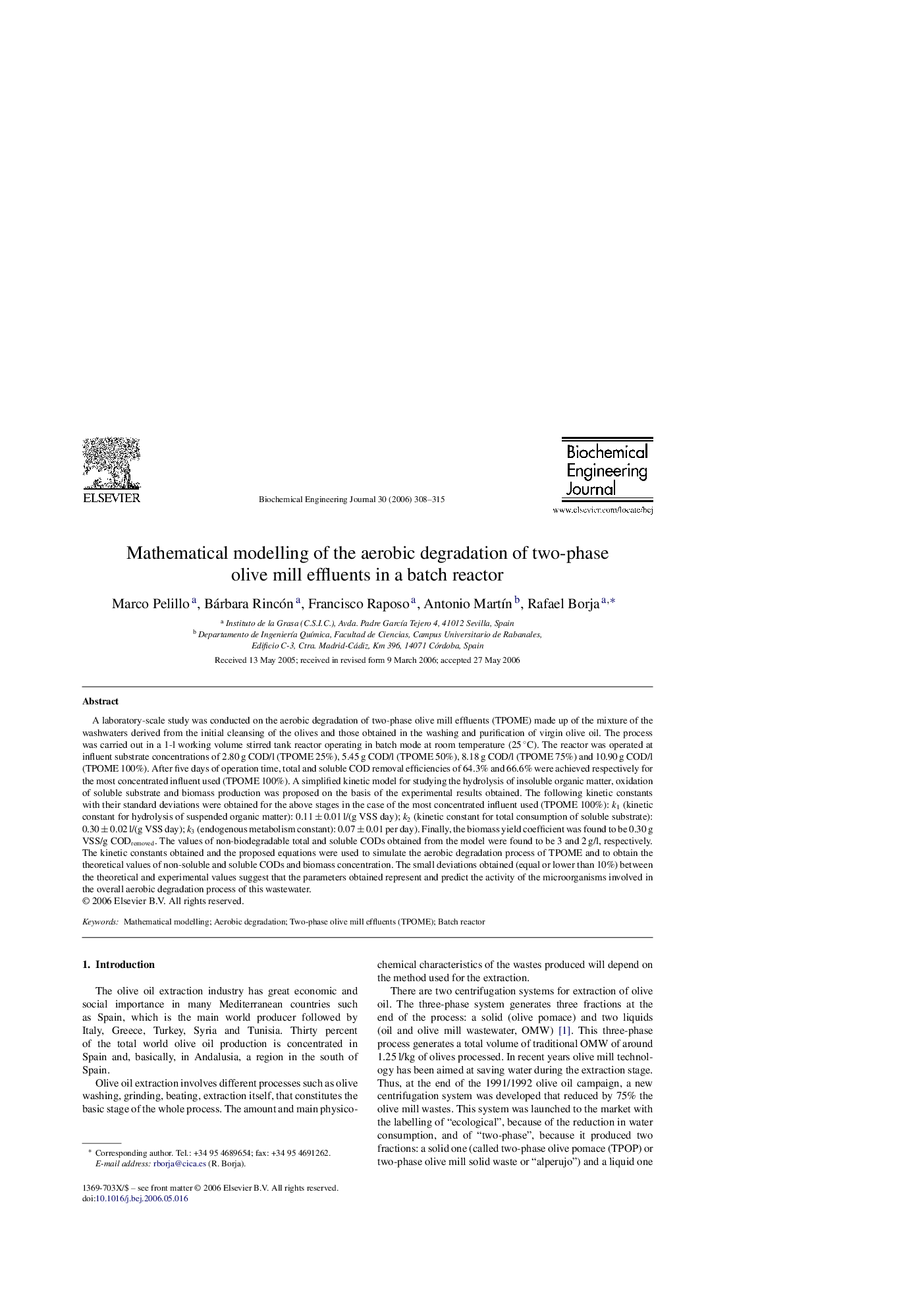| کد مقاله | کد نشریه | سال انتشار | مقاله انگلیسی | نسخه تمام متن |
|---|---|---|---|---|
| 4881 | 253 | 2006 | 8 صفحه PDF | دانلود رایگان |

A laboratory-scale study was conducted on the aerobic degradation of two-phase olive mill effluents (TPOME) made up of the mixture of the washwaters derived from the initial cleansing of the olives and those obtained in the washing and purification of virgin olive oil. The process was carried out in a 1-l working volume stirred tank reactor operating in batch mode at room temperature (25 °C). The reactor was operated at influent substrate concentrations of 2.80 g COD/l (TPOME 25%), 5.45 g COD/l (TPOME 50%), 8.18 g COD/l (TPOME 75%) and 10.90 g COD/l (TPOME 100%). After five days of operation time, total and soluble COD removal efficiencies of 64.3% and 66.6% were achieved respectively for the most concentrated influent used (TPOME 100%). A simplified kinetic model for studying the hydrolysis of insoluble organic matter, oxidation of soluble substrate and biomass production was proposed on the basis of the experimental results obtained. The following kinetic constants with their standard deviations were obtained for the above stages in the case of the most concentrated influent used (TPOME 100%): k1 (kinetic constant for hydrolysis of suspended organic matter): 0.11 ± 0.01 l/(g VSS day); k2 (kinetic constant for total consumption of soluble substrate): 0.30 ± 0.02 l/(g VSS day); k3 (endogenous metabolism constant): 0.07 ± 0.01 per day). Finally, the biomass yield coefficient was found to be 0.30 g VSS/g CODremoved. The values of non-biodegradable total and soluble CODs obtained from the model were found to be 3 and 2 g/l, respectively. The kinetic constants obtained and the proposed equations were used to simulate the aerobic degradation process of TPOME and to obtain the theoretical values of non-soluble and soluble CODs and biomass concentration. The small deviations obtained (equal or lower than 10%) between the theoretical and experimental values suggest that the parameters obtained represent and predict the activity of the microorganisms involved in the overall aerobic degradation process of this wastewater.
Journal: Biochemical Engineering Journal - Volume 30, Issue 3, 25 June 2006, Pages 308–315